10 Best Alternative Botpress You Should Know in 2025

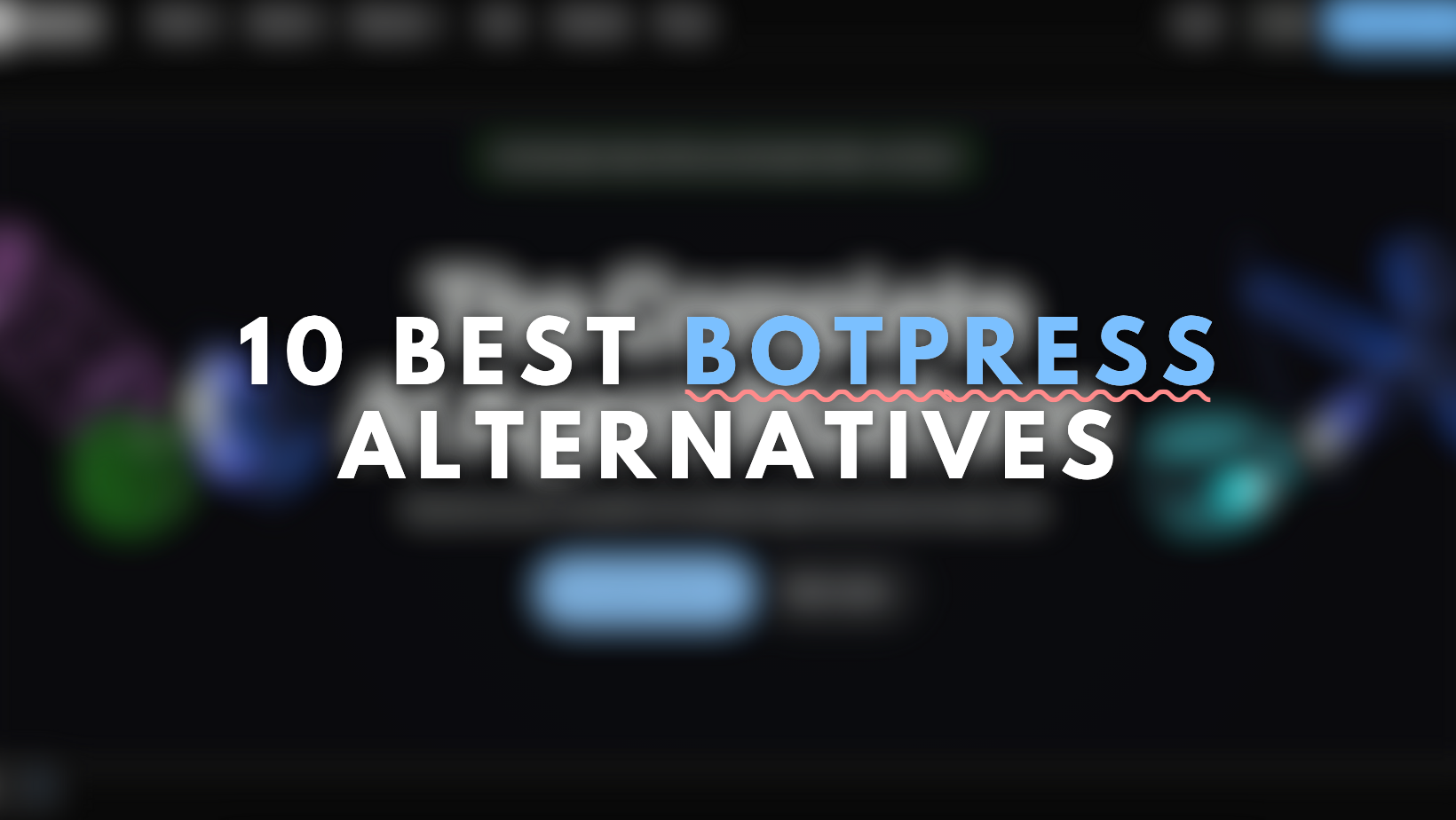
Botpress is an open-source chatbot platform designed for building AI chatbots and conversational agents. It provides technical teams with workflow builders, natural language understanding (NLU), and extensive customization options. However, many users find it challenging due to complex setups.
In this blog we will reviews ten chatbot platforms that address these challenges in 2025. It includes solutions for teams seeking no-code builders, SMBs to enterprise-grade solutions, and social media-specific chatbots. Each alternative offers a better functionality. Each alternative provides practical improvements that help businesses create, manage, and scale chatbots more efficiently while maintaining flexibility and advanced automation.
Botpress provides flexible chatbot development tools, but several limitations make it less practical for many teams. Based on user feedback and publicly available information, here are the main challenges businesses face with Botpress:
Choosing the right chatbot platform can be challenging, especially with so many options available. To help, we’ve put together a detailed review of the 10 best Botpress alternatives for 2025. Each summary outlines key features, pricing, and the types of businesses these platforms fit best.

YourGPT is an AI-first platform designed to build and deploy conversational ai agents without coding. It helps businesses manage customer support, sales, and operations through a single workspace that connects to websites, WhatsApp, Slack, Messenger, Instagram, LINE, email, and voice channels. With advanced AI, self-learning, and visual automation tools, YourGPT enables teams of any size to automate conversations, cut repetitive tasks, and deliver faster, more personalised experiences at scale.
Discover how YourGPT AI agents can streamline your customer service
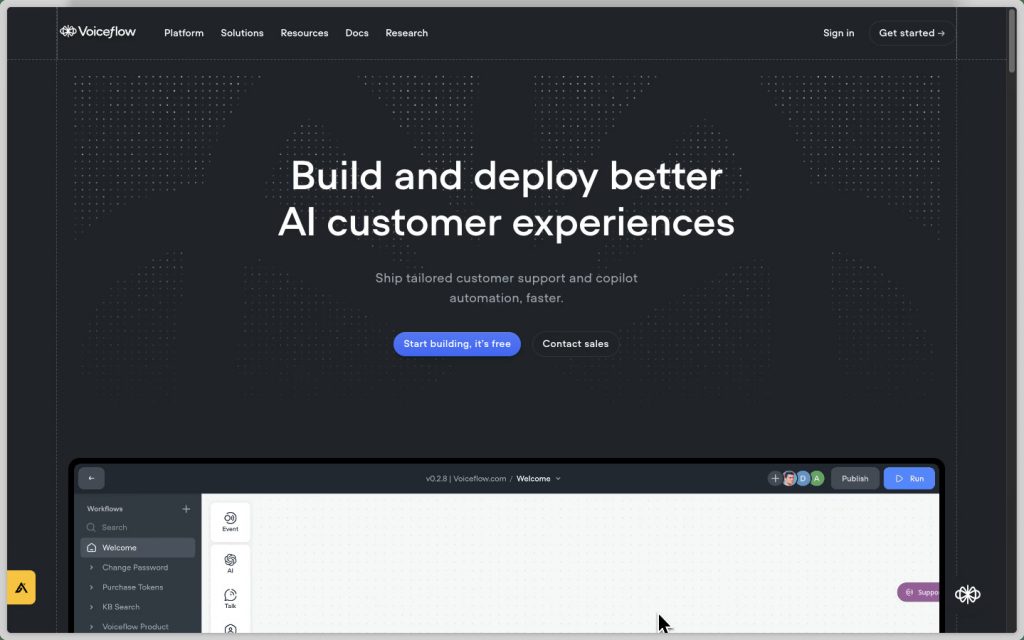
Voiceflow is a no-code platform for designing, prototyping, and deploying conversational AI agents across web and voice interfaces. It provides an intuitive visual environment that enables teams to collaborate in real time while building chat or voice-based assistants. Its multi-model support and rapid prototyping tools make it an efficient choice for teams focused on speed, flexibility, and collaboration.
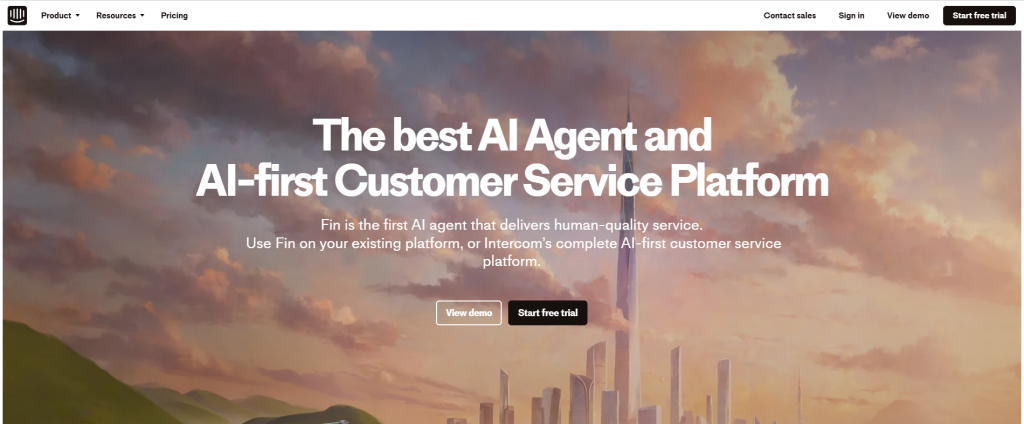
Intercom is a well-established customer communication and engagement platform that combines live chat, AI chatbots, and automation tools. It helps businesses manage conversations, onboard new users, and provide support across web and mobile applications. Known for its polished design and strong customer data tools, Intercom is often used by SaaS companies and growing startups to improve engagement and retention.

Yellow.ai is an enterprise-grade conversational AI platform that combines intelligent automation with advanced natural language understanding to manage complex customer interactions across chat and voice channels. It enables global businesses to automate customer journeys, improve service delivery, and handle high-volume conversations efficiently.

Rasa is an open-source conversational AI framework built for developers and enterprises that require complete control, customization, and on-premises deployment. It offers deep technical flexibility with code-level access to every component, making it ideal for organizations focused on security, scalability, and tailored AI behavior.

Landbot is a no-code platform focused on creating visually engaging and interactive chatbot experiences. Known for its intuitive design and user-friendly interface, it helps businesses build conversational landing pages that attract attention and drive higher conversions. The platform is ideal for teams that value design flexibility and quick deployment without technical setup.

Cognigy.AI is an enterprise conversational automation platform that delivers advanced chat and voice AI capabilities at scale. Designed for large organizations, it provides both no-code and low-code tools that let teams build, manage, and optimize customer interactions across digital and voice channels.
Global Brands: Organizations seeking consistent voice and chat automation across markets.
Enterprises: Companies running large contact centers with multilingual customer bases.
Developers: Teams combining low-code configuration with advanced scripting.
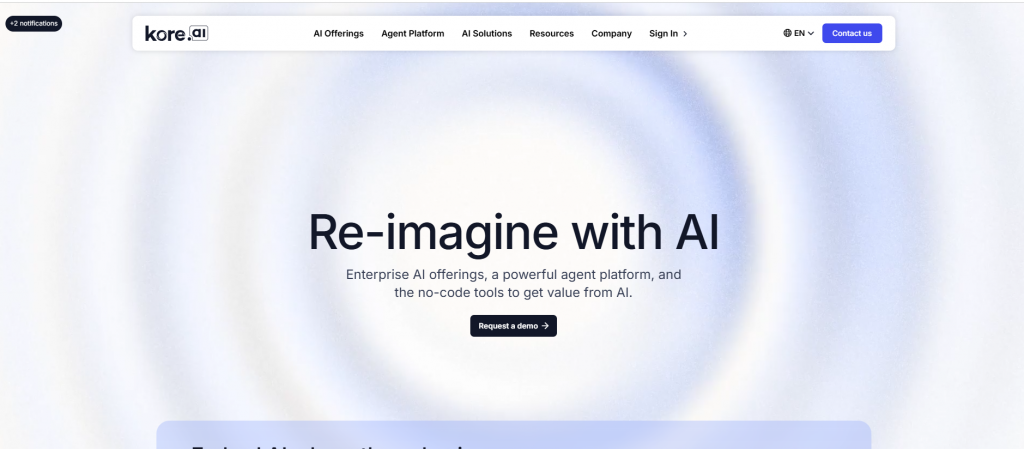
Kore.ai is a leading conversational AI and automation platform known for blending enterprise-grade intelligence with a user-friendly design environment. It supports AI assistants, voice bots, and process automation across industries, enabling businesses to improve both customer and employee experiences.
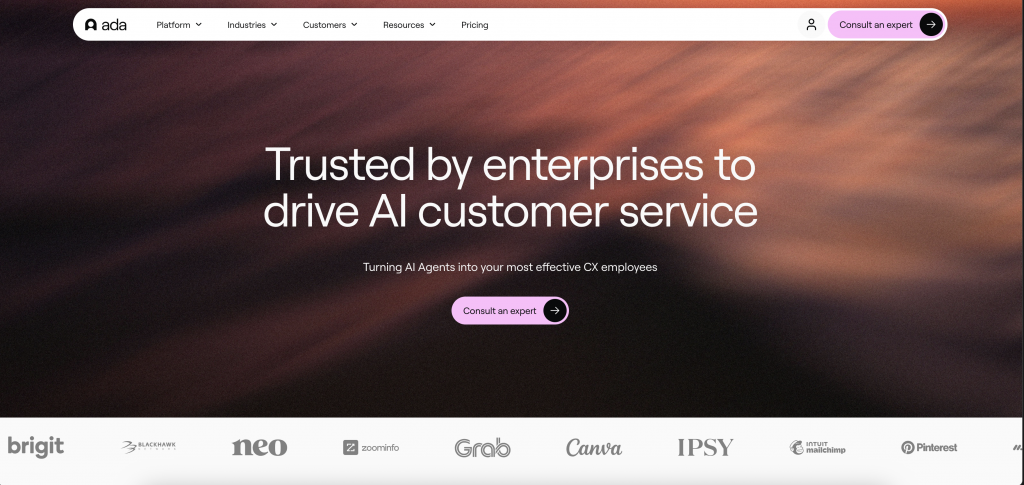
Ada is an AI-powered automation platform designed to help businesses deliver efficient, personalized customer support across chat, social, and voice channels. It focuses on reducing manual workload by automating repetitive queries and integrating smoothly with existing helpdesk and CRM systems.
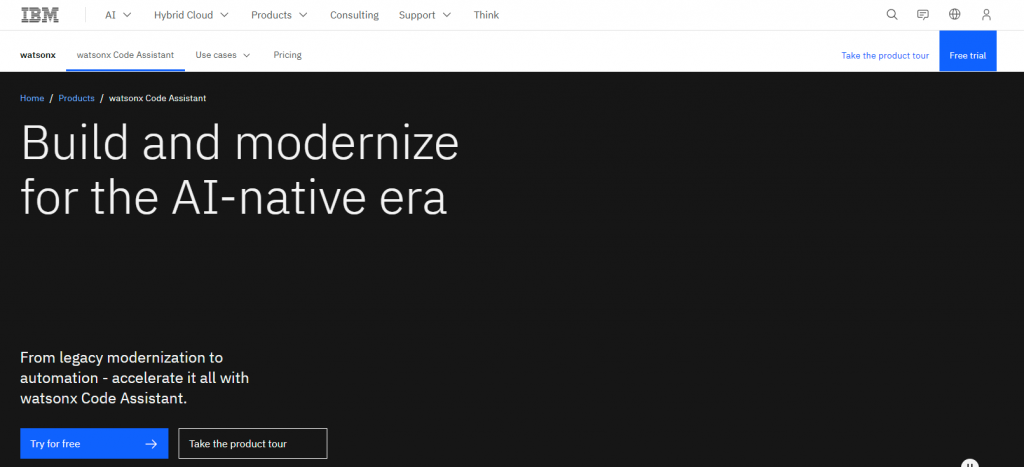
IBM watsonx Assistant is an enterprise-grade conversational AI platform designed to help organisations automate customer interactions with precision and scale. It allows teams to create intelligent virtual agents for web, mobile, and voice channels using a blend of pre-trained AI and customisable workflows.
| Platform | Best For | Pricing | No Code | Learning Curve |
|---|---|---|---|---|
| YourGPT | Agentic AI and Multi channel | From $X/mo | Yes | Low |
| Voiceflow | Team Collaboration | From $40/mo | Yes | Medium |
| Intercom | SaaS Engagement | From $74/mo | Limited | Medium |
| Yellow.ai | Enterprise Scale | Custom | Limited | Medium |
| IBM watsonx | Enterprise Integration | Custom | No | High |
| Tidio | Small Business | From $29/mo | Yes | Low |
| Landbot | Conversational Funnels | From $40/mo | Yes | Medium |
| Kore.ai | Complex Automation | Custom | No | High |
| ManyChat | Social Media | Free to $145/mo | Yes | Medium |
| Rasa | Custom Development | Free OSS | No | Very High |
Selecting the right chatbot platform starts with understanding how well it fits your team’s skills, business objectives, and long term vision. The best solution helps you automate faster, communicate better, and scale without technical friction.
1. Match the Platform with Your Team’s Skills
Before comparing features, assess your team’s technical strengths. If your team is non technical, choose a platform that allows easy visual building without writing code. YourGPT is ideal because it combines no code simplicity for quick setup with advanced visual design for building complex automation when needed. For technical teams, tools such as Rasa or IBM watsonx provide deeper control.
2. Define Your Use Case Clearly
Each business has different automation goals. For customer support and lead generation, YourGPT, Intercom, and Landbot work effectively. For enterprise scale automation, Yellow AI and IBM watsonx are better suited. Identify whether your main objective is support automation, conversational sales, or process optimisation, then choose a platform that aligns directly with it.
3. Look for Ready Integrations
Smooth integration with your existing tools is essential. Check for compatibility with CRMs, helpdesks, e commerce platforms, and communication channels such as WhatsApp, Facebook Messenger and Slack. YourGPT, Intercom, and Yellow AI stand out for their wide integration range and quick setup across multiple systems.
4. Choose Transparent and Predictable Pricing
Prefer platforms that offer clear pricing instead of variable charges per interaction. Predictable, tiered plans make budgeting easier and prevent cost escalation as usage increases. Always review the total cost of ownership including setup, training, and ongoing maintenance.
5. Prioritise Features that Matter Most
Look for core capabilities such as a no code builder, live chat with human handoff, analytics, and multi channel support. Advanced automation should work immediately without requiring deep technical knowledge. YourGPT combines simplicity with power, making it suitable for both business and technical teams.
6. Look for Long Term Value
Cheaper tools often limit scalability or demand more manual setup. The best approach is to evaluate how much time, efficiency, and customer value a platform delivers. Choose a solution that reduces technical complexity, supports growth, and delivers measurable returns over time.
YourGPT, Voiceflow, and Landbot are popular among non-technical teams. They use visual builders, templates, and automation workflows that make chatbot creation accessible to anyone in customer support, marketing, or operations.
YourGPT is an AI-first no-code platform built for teams of all sizes. It combines self-learning automation, a drag-and-drop AI Studio, and native support for WhatsApp, Slack, Instagram, and websites. It removes the technical barriers Botpress users often face and delivers measurable business outcomes faster.
Open-source chatbot tools such as Rasa are free to download, but they need technical setup, server hosting, and ongoing maintenance. The software may be free, yet the infrastructure and team resources add hidden costs over time.
YourGPT, Yellow.ai, and Kore.ai offer strong automation and natural language understanding that work out of the box. They manage context, multi-turn conversations, and workflow actions without requiring machine learning knowledge.
Yes. You can move your existing content and conversation flows from Botpress to YourGPT easily. The platform supports importing FAQs, training data, and website content directly, allowing you to rebuild or refine your chatbot quickly without starting from scratch.
Yes. YourGPT can train its AI on data from multiple sources including websites, files, PDFs, Google Docs, Notion pages, and YouTube transcripts. This allows the chatbot to answer questions based on your real business information.
Yes. Platforms such as YourGPT, Kore.ai, and Yellow.ai integrate with CRMs like Salesforce and HubSpot, helpdesks such as Zendesk, and communication tools including Slack and WhatsApp. These integrations automate data sync and streamline customer engagement.
Most teams can launch a fully trained chatbot on YourGPT within a few hours. The platform’s no-code builder and prebuilt integrations shorten setup time significantly compared to traditional development tools.
Yes. YourGPT and Yellow.ai support both chat and voice agents. Voice features include speech recognition, call automation, and voice-based workflows that help businesses manage support and sales conversations in one system.
Yes. Enterprise-ready platforms such as YourGPT, Kore.ai, and Yellow.ai provide SOC 2 and GDPR compliance, scalability, and multi-department automation. They are built to handle high-volume communication and complex business logic securely.
Start by defining your team’s technical comfort and main goal. For no-code and fast automation, YourGPT is a great choice. For enterprise customization or on-premise needs, Kore.ai or IBM watsonx may fit better. The best platform aligns with your use cases, not just features.
Choosing the right Botpress alternative comes down to one thing—finding a platform your whole team can actually use and grow with. Botpress works well for developers, but most companies today want something that gets results fast without depending on technical skills.
YourGPT fits that shift. It gives teams a clear, no code way to build conversational agents that handle real business tasks on WhatsApp, Slack, Instagram, Messenger, websites, and even voice. Everything works in one place, so setup feels quick and natural.
What stands out is how practical it is. Pricing is clear, integrations come ready, and the interface is simple enough for anyone to use. Teams spend less time figuring things out and more time improving how they work with customers.
Businesses using YourGPT often notice an immediate difference. Conversations flow better, daily work runs smoother customer interactions, and automation quietly takes care of repetitive jobs in the background. It is the kind of product that makes AI feel less like a project and more like part of everyday business.
If your goal is to make AI work for your business without technical overhead, YourGPT is a practical choice to start with and scale confidently.
Create smart chatbots for customer support, sales, and operations. Connect to WhatsApp, Slack, or your website and start real conversations that drive results.
7 day free trail · No credit card required · Omnichannel
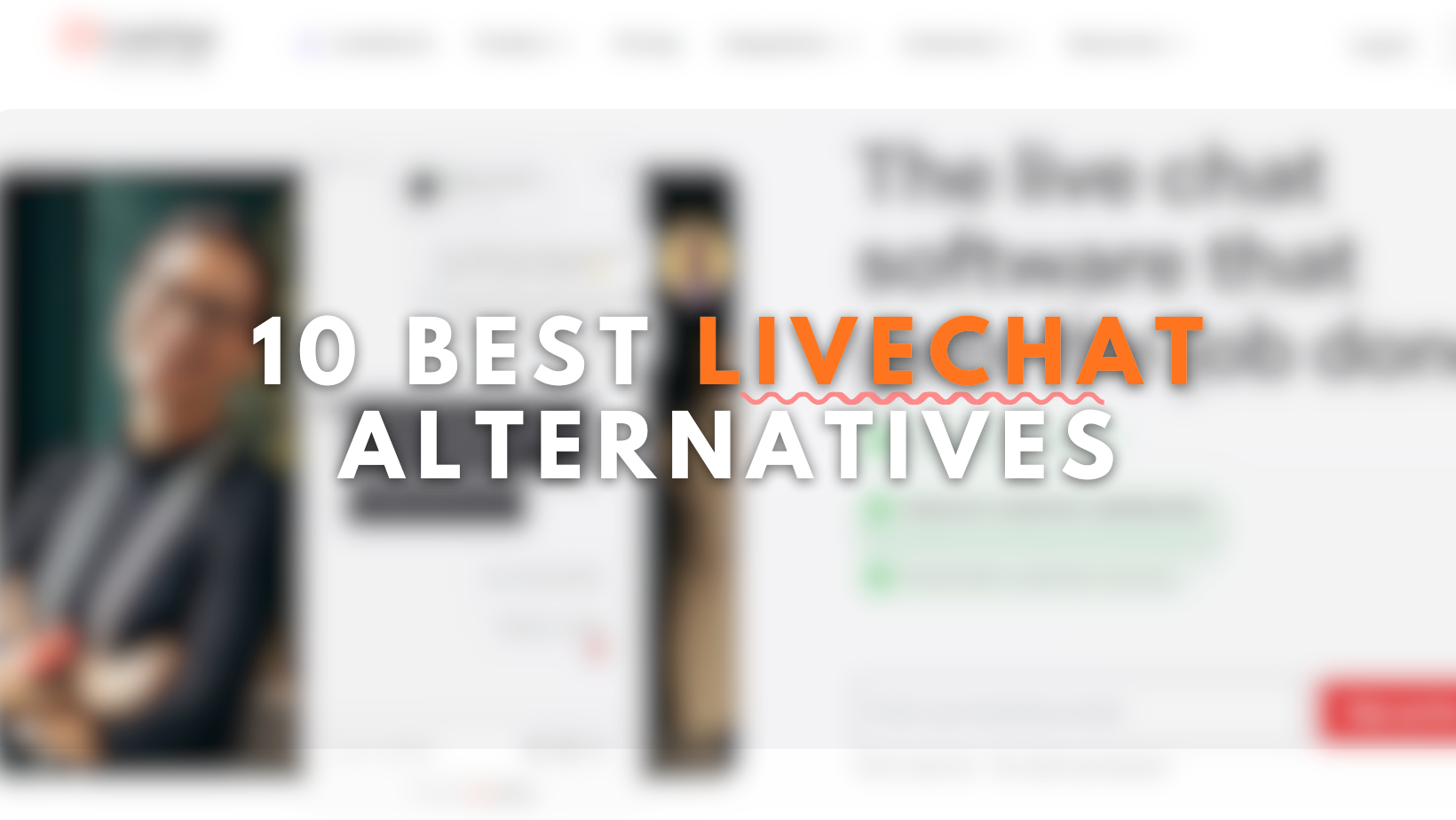
LiveChat is a customer messaging platform that has helped many teams handle customer questions through basic chat widgets, but the way businesses support customers has changed. People now expect quick answers across more channels, and support teams want tools that cut down on repetitive work instead of adding to it. As a result, many companies […]

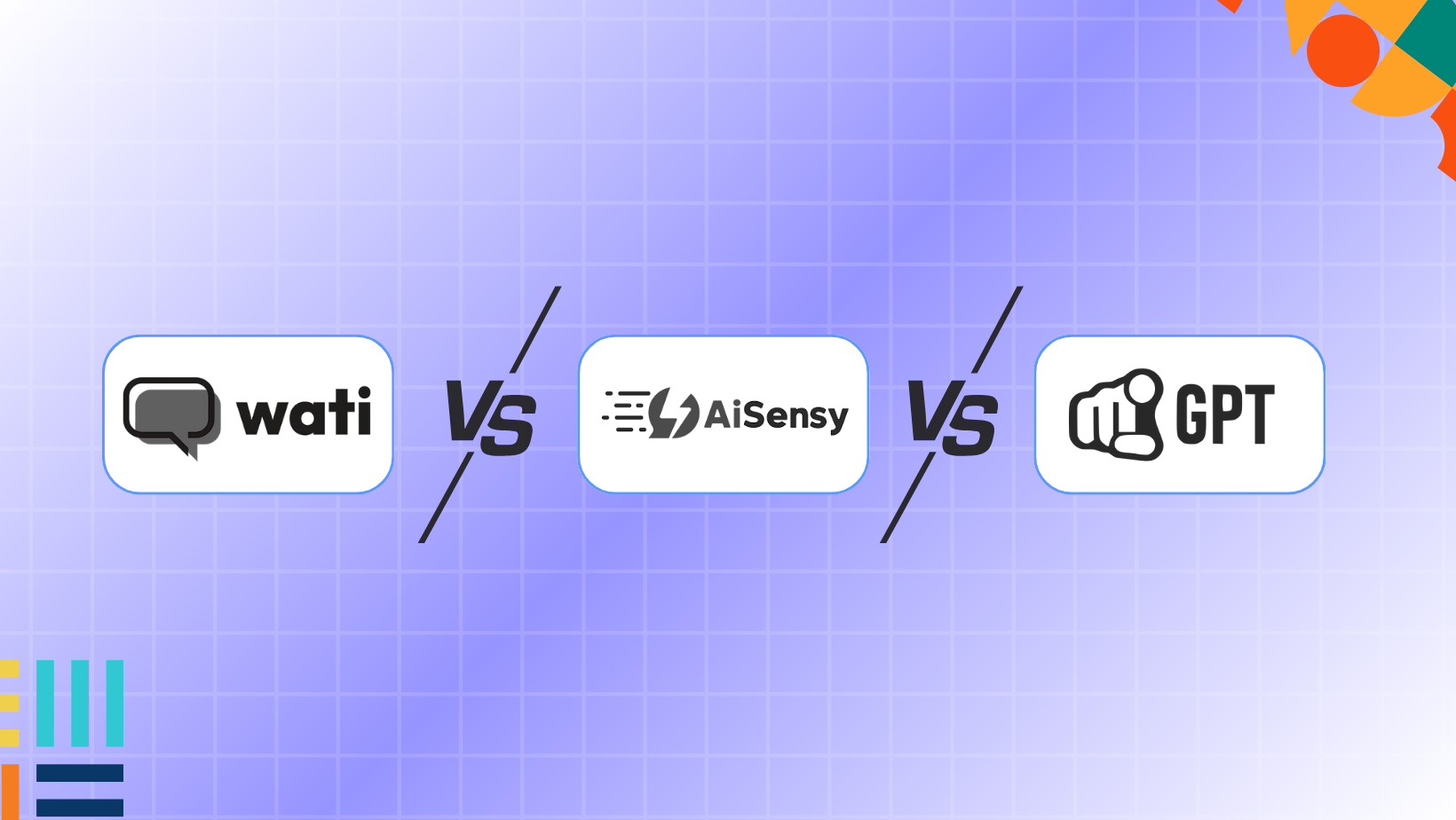
TL;DR Wati manages WhatsApp teams and shared inbox. AiSensy runs broadcast campaigns and drip sequences. YourGPT trains on your business data and executes real-time actions across multiple channels. WhatsApp and Instagram DMs now handle the majority of customer conversations for growing brands in 2025. What starts as 20-30 messages per day quickly scales to hundreds […]

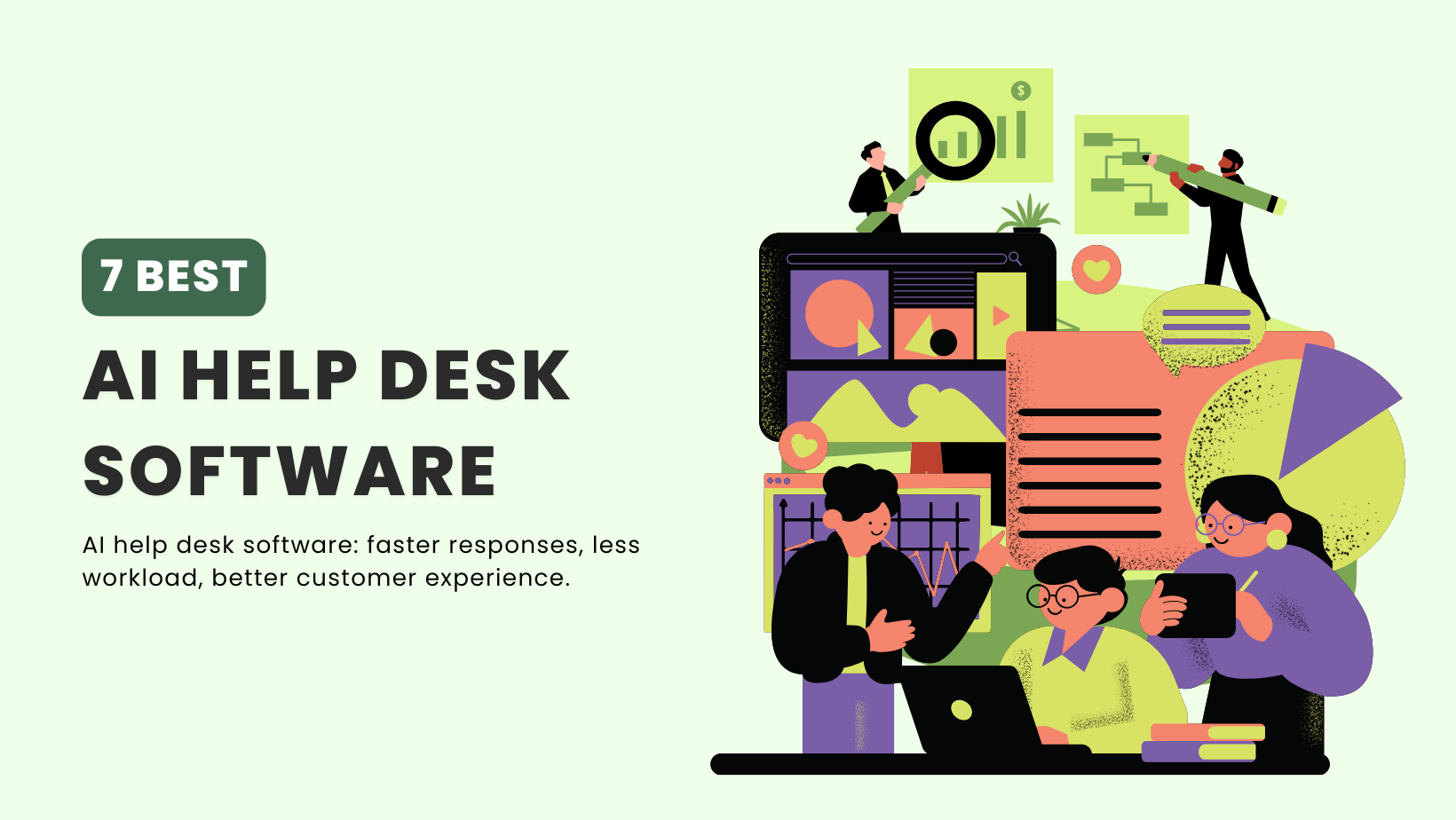
TL;DR AI help desk software reduces repetitive tickets by turning your knowledge base into instant answers. The market is growing fast as teams shift from adding agents to improving self-service and automation. This guide reviews seven platforms based on real performance so you can choose a tool that improves response quality and team efficiency. AI […]

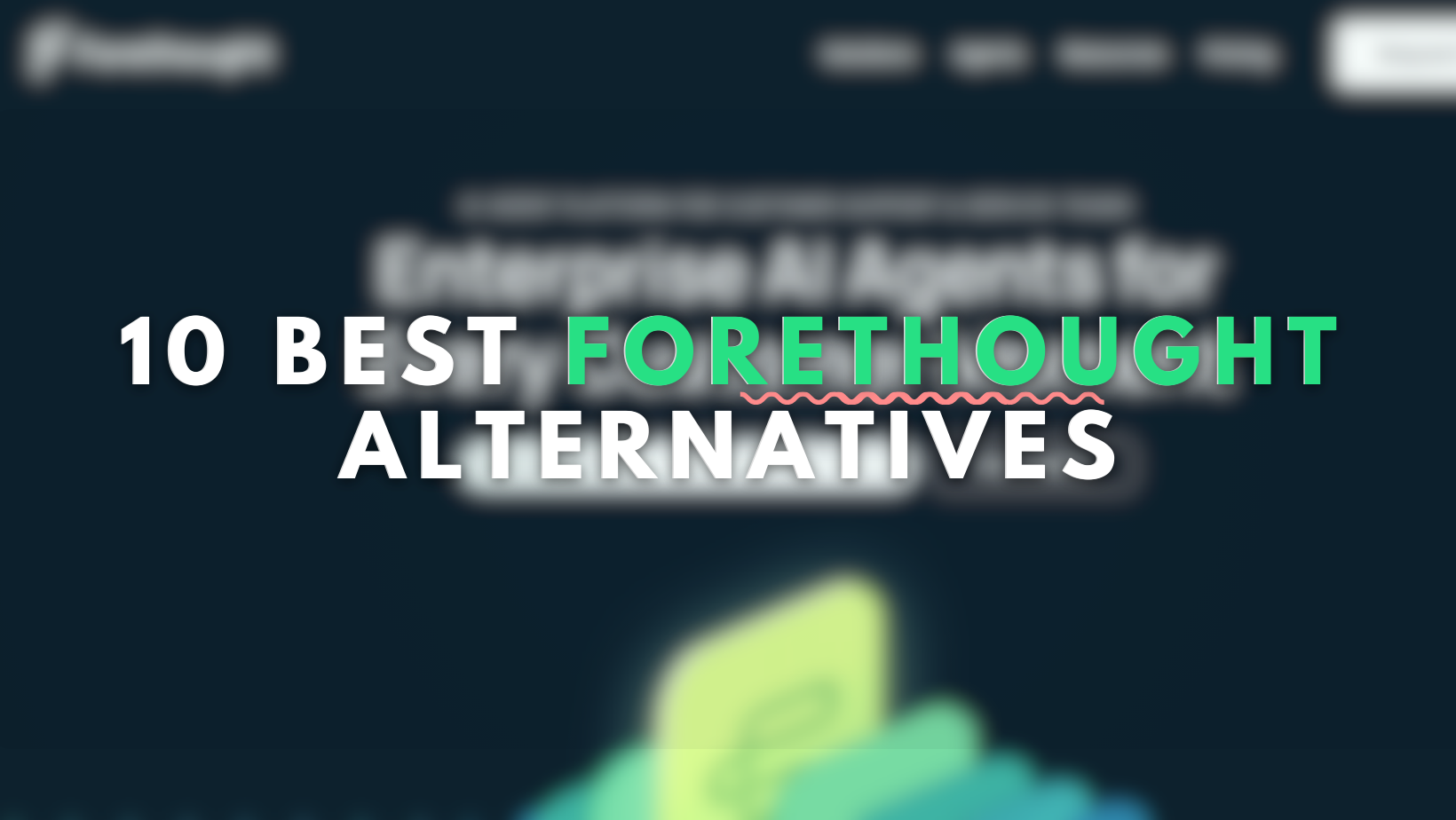
Forethought is an AI-powered support automation platform designed to build intelligent agents for ticket deflection and intent-based workflows, primarily targeting mid-market and enterprise support teams managing high volumes of tickets. This blog reviews ten Forethought options in 2025 that offer clearer pricing, faster deployment, and better customization. The selection ranges from no-code builders for small […]


YourGPT and Botpress are both AI agent platforms, but they take different approaches to automation and customer engagement. Businesses don’t need another chatbot. They need AI agents that connect to their existing systems, handle real tasks, and work across multiple channels without breaking down when customers ask something unexpected. This guide compares how YourGPT and […]

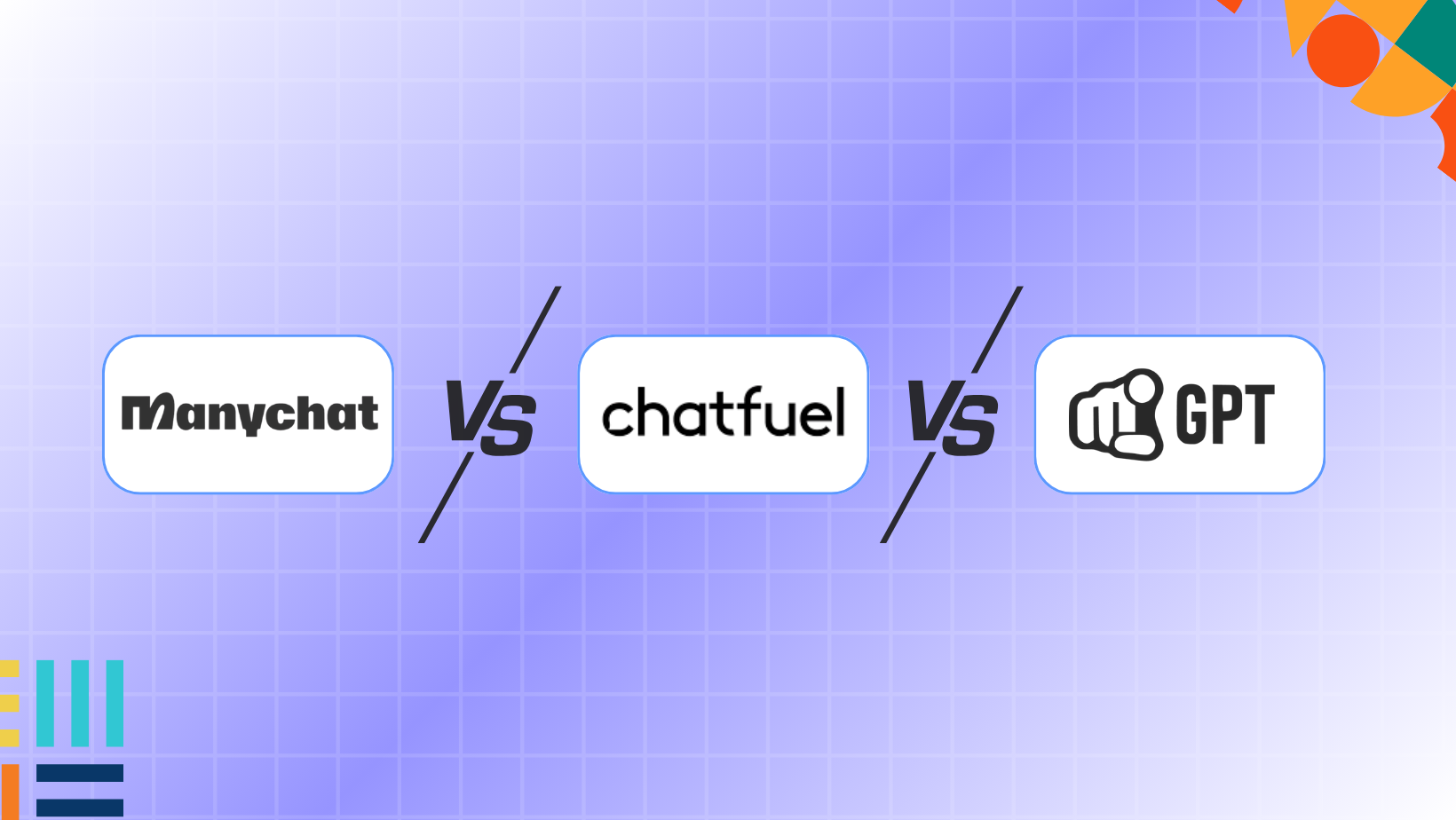
Manychat and Chatfuel are built for Facebook and Instagram marketing. They use pre-made templates and let you create conversation flows without coding. Both work well if your customer interactions happen mainly on Meta platforms. YourGPT works differently. It uses AI to handle conversations across multiple channels your website, WhatsApp, Instagram, email, and many more. It’s […]
